Published on September 26, 2016
By Thomas Van Hare
She was just the fourth woman in the world to be certified as a pilot. She was also the first to fly a plane at night. She invented sky writing — and then did it at night, illuminating her letters with flares that were mounted to the wings of her plane. She was the first woman to “loop the loop” and only the fourth person in the world to do so. She was the first woman to fly the air mail and the first to pioneer the mail route from Chicago to New York. Additionally, she was the first to then fly the mail in Western Canada — and only the second person, male or female, to deliver mail by air in all of Canada. Furthermore, in 1915, she built one of the first airports in Texas and also performed in countless airshows.
Her name was Katherine Stinson — and despite having achieved all that, most have probably never heard of her.
Katherine Stinson was barely 18 years old when she learned to fly. Flying wasn’t even her first dream — but it became her life. At first, all she hoped for was to make enough money to travel and study music in Europe. Her interest in flying, however, was overwhelming. She sold her piano to fund her flying lessons. The dream of performing was upstaged by her love of airplanes. She had the best instructor too — the famous pilot, Max Lillie, who taught at the Wrights’ school in Dayton, Ohio. She began her training there in July 1912. In just four hours of practice flying with her instructor, she was ready to solo. Her instructors told her that she was a natural pilot — they were right.
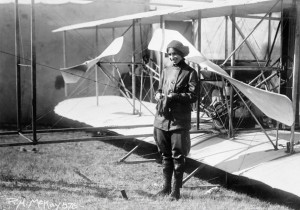
Today few are familiar with her name, yet for a time she was one of the most famous women pilots in the world. Most people these days associate her last name — Stinson — with aviation only because of her brother, Edward “Eddie” Stinson, who famously built airplanes under the Stinson brand name. In truth, however, it wasn’t she who followed him into the business, but the other way around. Her enthusiasm for flying was such that she also inspired her sister, Marjorie, to learn to fly. For a time, all three siblings flew airshows together. At every show, they performed under Katherine’s leadership.
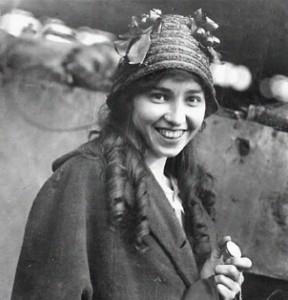
Another of her firsts was that she adorned her plane with roses and flew in the 1913 New Year’s Day Pasadena Parade. With her in the lead, the parade then included airplanes flying overhead. The assembled crowds were astonished. Today’s Parade of Roses accompanying the Rose Bowl football game is the descendant of that famous parade that she helped create. To further the excitement of her flying performances, she started “bombing” the crowds with bundles of roses that she threw from the cockpit of her airplane.
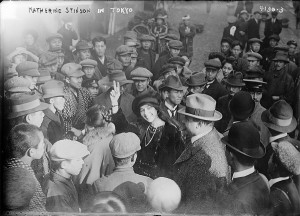
By 1915 and 1916, Katherine Stinson had expanded her air touring beyond the United States to the wider world. She was traveling the world to perform aerial stunts, night flying, and sky writing. She traveled across Asia and performed in both Japan and China — the first woman to fly there. The Japanese were so taken with her that they began calling her the “Air Queen”. Her flights inspired a generation of Japanese women to pursue careers in fields that were until then viewed as the sole work of men.
Vying for Airshow Popularity
With worldwide acclaim, Katherine then became one of the first pilots to attempt a loop. Despite that the plane she flew was barely up to the task, she was successful. Thus, she became the first woman to ever loop a plane. Globally, she was the only fourth person to do so. This made her a celebrity among pilots. Just performing one daring loop, however, wasn’t enough to satisfy her. In short order, she figured out how to loop a second time around. Then a third. Then she did it another 500 times as practice over the next six months. With all that practice, she could confidently pull off the maneuver at all of her airshows. However, inspired by her abilities, soon other pilots were looping too.
By 1916, the loop was part of every airshow’s typical fare. The crowds wanted more. But what? The other pilots couldn’t think of anything else to do. Katherine Stinson gave them the answer.
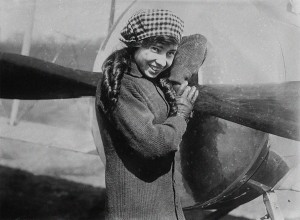
She expanded her showmanship to add an acting component. Capitalizing on her youthful looks, she performed under the moniker of the “Flying Schoolgirl”. On first meeting, most people thought she was still in her mid-teens. It didn’t matter that she was already in her mid-twenties — appearances were everything. She was all of 5′ 5″ and weighed only 101 pounds. With such a slim physique, she could easily pretend to be a teen.
She would flash a smile and walk to the airplane, making the best use of her shapely figure. Everyone would watch, thinking that it was nothing more than a actress pretending to be about to fly. Then, much to their surprise, suddenly she called for the mechanics to start the motor, waved to the crowd, and took off! Once she was airborne, she put on her performance right over their heads. She would drop toys and candy to children. Later, she dropped pamphlets, touting suffragette causes.
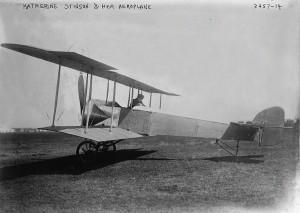
She was unapologetic too in her pursuits of “manly interests”. She supported the cause of the Red Cross as well. When it became clear that her flying depended on the quality of the maintenance given to the engine, she studied and practiced to become an aviation mechanic, mastering that field as well. She was at home in a dress, her flying pants and jacket, or dressed in mechanic’s duds. Yet still, she was never anything less than the perfect picture of femininity.
When her “flying schoolgirl” act “got old”, she took to wearing jodhpurs, a loose shirt and sometimes a flying jacket. This choice of dress went over well when compared with the more conservative, stately dresses that were worn by others in that era. When in Canada, the older ladies condemned her clothes choices as shocking and disgraceful. Predictably, the men loved it.
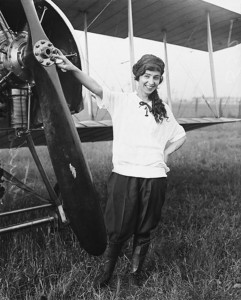
To further build her fame, she took to performing extra shows at night, taking off and flying over the crowds with flares mounted on her airplane. She was the first pilot in the world to fly at night, which was spectacle enough. However, after a short time, she added a new idea — skywriting. With the path of her plane illuminated by the flares on the tail and light bulbs on the wingtips, she sketched out letters in the sky in cursive. Her first show where she did that was in California. She spelled out the letters “CAL”.

By 1916, she was making over $1,000 per show (about $24,000 in today’s terms adjusted for inflation). She realized that if she wanted to keep bringing in the big dollars, she would need something else — yet again. She was always new acts and feats in the skies. She always needed something more to do in her plane to keep the crowds coming. She started to race her plane against racecars around oval horse tracks, much to the enjoyment of the crowds. Famously, she raced Dario Resta, the winner of the 1916 Indianapolis 500, on track. He raced her in his Peugeot L45.
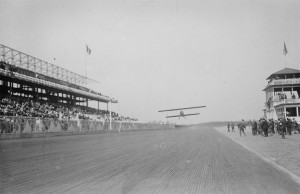
She had a biplane especially built just for her airshows, one that she helped design. She called it the Partridge-Keller “Looper”. It was fitted first with an 80 hp Gnome Rotary engine that she purchased from the wreckage of the crash that had killed America’s most famous male stunt pilot of the era, Lincoln Beachey. Later, she realized that the Gnome was reliable enough and replaced this with a 80hp Smith 6-cylinder radial engine. Others thought she was superstitious, but it was nothing more than the question of reliability that drove her choice — she was a mechanic after all.
With her “Looper” airplane, she invented a signature maneuver called the Dippy Twist Loop. It became a sensation and was her most requested maneuver for a time. Today, weirdly, there are few pilots who know of it at all.
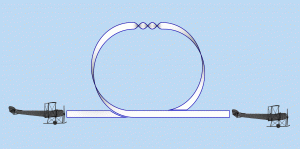
The Dippy Twist Loop
The secret of Katherine Stinson’s signature maneuver was to combine a loop with a snap roll. The snap roll was done at the very top of the loop, when the airplane was also at its slowest. At that point, she was also hanging upside down high over the heads of the adoring crowd. With a flick of the wrist and a stomp on the rudder pedals, she would flip the plane all the way around. Then, coming out of the snap roll, she would curve her way down on the back side of the loop. As always, she would make sure to pull out of the loop very low to the ground.
With the Dippy Twist Loop, she was drawing ever greater numbers to her airshows. The first time she performed the maneuver, many thought that she had lost control of her plane and was about to crash. Then, they were stunned to see her regain control after the snap roll, still upside-down, and with a deft pull on the stick, cutting her throttle, she would zoom back down. The crowds cheered wildly when they realized it had been planned all along.
She was more than a natural pilot — she was a natural showman.
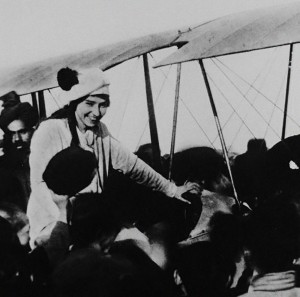
Later Life
The burgeoning airshow scene was cut short in America with the big news of 1917 — America was entering the Great War in Europe. Prior to America’s entry into the war, however, she was already serving the war effort — despite the neutrality of the USA at the time. She took on work as a flight instructor for Canadian pilots, though she hosted them in Texas at her airport.
As each of her classes graduated from her flight training program, they went overseas to serve in the Royal Canadian Flying Corps. Many flew combat on the front lines against the Germans. She nicknamed her stable of military pilots, “The Texas Escadrille”, borrowing the French word for squadron. The US Army soon followed suit and the pilots of the U.S. 1st Aero Squadron trained with her at San Antonio, on the very field she built with the money she had earned in the airshow circuit.
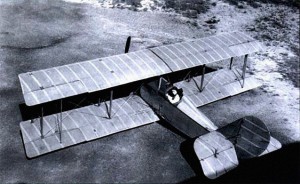
With the entry of the US into the war in 1917, she was keen to join up and serve America. Although she was earning as much as $2,000 per airshow ($48,000 in today’s money, corrected for inflation), she volunteered to fly in combat. She hoped to be a reconnaissance pilot since many said that women should not fly in combat. Her skills were excellent, she said, and with her aerobatic abilities, she could make herself a hard target for an attacking pursuit airplane. Already, she had trained dozens of men to go into combat. She knew what it took.
Despite her skills, she was denied the opportunity. The military review board, in a raw display of the wanton sexism of the times, declared that women were unsuited for flying in the war — in any role, even reconnaissance. Undeterred, she applied a second time. Predictably, she was rejected again. She was one of the only two women pilots to attempt to enlist during the entire Great War. The other was her sister, Marjorie. She was also rejected.
Still wanting to serve, Katherine signed on as an ambulance driver, a job that arguably put her in greater danger than flying would have. She was shipped over to serve in both England and, more critically, in France, working very near the front lines. She drove wounded soldiers from the trenches to rear area hospitals. In doing so, she was at risk from artillery barrages, air attacks, and accidents involving unexploded ordinance that littered the battlefield.
Ultimately, her wartime ambulance driving put an end to her career as an airshow performer aviator. While in France, she was diagnosed with pneumonia. Thereafter, it was discovered that actually had tuberculosis. She was bedridden. It took six months before she recovered enough to return to the USA on board a ship. She was terribly weak and many doubted — including her — that she would ever be able to get back into any type of flying, let alone airshow performing.
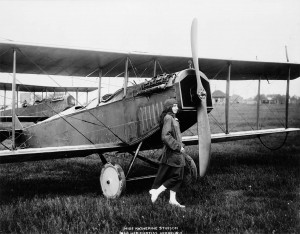
She was still sick after returning to the USA and her doctors advised that she was too frail to fly. Still, she flew from time to time anyway, but mostly in distance flying rather than the more physically stressful aerobatic routines that she had previously performed. She never returned to the moneymaking airshow circuit. She flew the mail on and off for a few years, often in her custom-built Curtiss Stinson Special, a plane her brother had helped design and build.
Ultimately, facing the lasting effects of her health condition, she studied to become an architect. With that, she left flying airshows forever. She moved to Sante Fe, New Mexico, and there, in 1928, she met and married another pilot. He was a war veteran and US fighter pilot named Miguel A. Otero, Jr. He was the son of the Governor of New Mexico and also a lawyer. Later, he became a judge and rose to some prominence in the Republican Party. That suited her fine as the Republicans were the chief political sponsors of the suffragettes, supporting all women’s right to vote. The Democrats were completely against it — women, they said, should remain in the kitchen and stay out of politics.
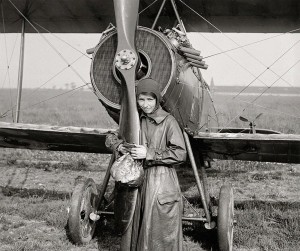
Kathrine Stinson-Otero and Miguel Otero never had children of their own. Instead they raised four adopted children — Barbara, Jerry, Jackie, and Edward Stinson. These were Kathrine’s brother Jack’s children, whom she adopted and raised. After many years, finally she defeated the ill effects of her tuberculosis and lived a full life. Only late in life after a long illness, Katherine Stinson-Otero passed away in 1977 at the age of 86. She left a strong legacy in aviation history and inspired many other women to fly — more so than any other woman of her era.
Among those who were inspired to fly was none other than Amelia Earhart.
Katherine Stinson earned the name the Japanese once called her — she was the first among the greats and the Air Queen.
+ PLEASE SUPPORT US THROUGH PATREON! +
+ MAKE A ONE-TIME DONATION THROUGH PAYPAL! +

Great story enjoyed it good work as always.
What a great story. Pity we haven’t heard more of this amazing woman !
Great story! She has, unfortunately, slipped into obscurity because old geezers like me, who did know her legacy, failed to pass it on! For that, I apologize! Sam Douglass
What a remarkable woman, exemplary human being and inspiring aviator.
Thank you for sharing this great story.
I think the modern version of the ‘dippy twisty loop’ is called the Avalanche, and sometimes The Porteus Loop. I think it should be recognised as the Katherine Loop !
Hey Joe, I flew as a passenger in a Stinson Voyager at the Ruidoso Air Service in the late 40s. Dick Gann was an air force pilot who started the flying service when he came home, I had no idea of Ms. Stinson’s connections to new Mexico. Very interesting!
This is a great piece of history. I will use it in my outreach to youth of both genders!
I am amazed at this woman’s aviation career. She certainly out did the men! What a pleasure it would have been to announce her act.
Great history, well told, and really appreciate the effort to include all those photos. Nice to think that this superb pilot had the chance to pass along her skills – and inspiration – to others. Thanks very much!
People say that women cannot do what men do. Like so many other things, this too proves them wrong!
My mother, Barbara (Bobbie, Robin) was the first child of Jack and Ann Stinson.
I have learned so much from this article that my mom forgot to pass on to us through the years. I’ve always had a passion for flying, however, unfortunately I was born with a slight vision problem that excluded me from flying.
Thank you!
Adam Koster